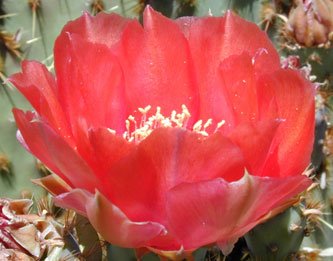The flowers change as the season unfolds, as we go north and as we gain altitude. The butterflies change with the flowers and the birds, of course, also change with the habitat. In the south of Spain we saw magnificent fields of cobalt blue, vivid purples, brilliant pinks, all punctuated with whites and yellows and with bright red poppies lining the roadsides. Hordes of big black and white butterflies dance ecstatically among the blooms while the yellow and the orange-winged varieties seem to be more solitary.
There are white storks all over Portugal and western Spain. Their nests adorn the special platforms at the tops of almost all the large power transmission line towers and every church tower is shared by two or three or more pairs. They fill the skies and cluster in the fields in groups of five, ten, or twenty, diligently hunting whatever it is these huge birds eat and need to take back to the nest to their hungry and rapidly growing young.
In the very southwest of Spain, the Donana National Park is a broad marshy river delta filled with wading birds--gray herons, white egrets, black-winged stilts and of course the most prized, the spoonbills and lesser flamingos. Noisy black terns squabble in the air a few feet over the marshes and there are swallows and martins everywhere. Flashy green-and-gold bee-eaters the size of robins are almost as common as the soaring black kites and the noisy azure-winged magpies.
The Donana is a subtle place but at Montefrague National Park, in the west-central part of the nation, both the birds and the scenery are grand and magnificent. Dozens of Griffon vultures, larger and more beautiful than any of the American eagles, soar by the dozens along the face of the cliff where the Rio Tejo breaks through a great rock massif on its way to the Atlantic at Lisbon. The dramatically named "Gypsy's Leap" is a dark cliff studded with perches for vultures and small caves in which the black stork nests, emerging to soar low over the water like some prehistoric proto-avian. The blue rock thrush and the rock bunting flit almost unnoticed on the nearer rocks, overshadowed by their much-larger cousins.
Thanks to the kindness of a British birder who loaned us the views through his spotting scope and literally led us to the proper viewing locations, we saw both the black vulture and the Spanish Imperial Eagle on their respective nests as well as the lovely white Egyptian vulture who obliging came out of its cave nest to soar and show us its lovely markings.
Yesterday we were able to "pass forward" the kindness of strangers. We are in a beach resort on the north coast of Spain, staying in a hotel room with a balcony directly overlooking the beach. While walking along the tiny commercial waterfront the other day, we had encountered a Canadian from Saskatchewan who is in his second year of spending his summers making a planned multi-year voyage around the world in his 40-foot sailboat. Yesterday while returning from the bakery with our lunch supplies, we saw our Canadian friend sitting on a bench waiting for the bus. One thing led to another and we invited him to join us for a day of birding in the nearby Picos de Europa, the mountain range that begins about 10 km south of our beach and goes up to over 8,000 feet with its highest peaks. The scenery turned out to be superb with fantastic granite peaks and winding roads that kept Al´s full attention. When we got out for hiking, the whole new set of wildflowers, including vivid blue gentians and spikes of tiny purple orchids made it hard to decide whether to look up or look down. The birding wasn't that great but we were able to introduce our guest to a couple of species that he had wanted to see and we had the additional pleasure of sharing with him just as others had shared with us.


0 Comments:
Post a Comment
<< Home